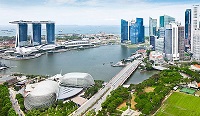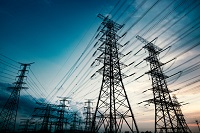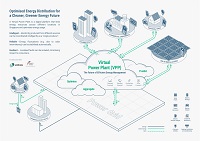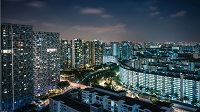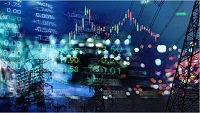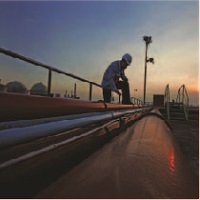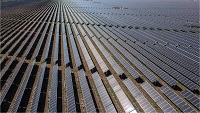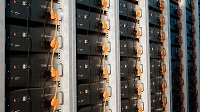For more information, please refer to:
Speeches
18 Sep 2009
Ladies and Gentlemen,
Introduction
- I am happy to join you for this Asian Youth Energy Summit
- All of you are familiar with the energy challenges we face
- Today the world gets more than 80% of its energy from fossil fuels – oil, gas and coal
- But there are growing concerns that this is not sustainable
- Energy security and political risk
- Supply of easily accessible fossil fuel becoming more scarce
- Climate change
- How do we have energy that is cheap, energy that is secure, and energy that is clean?
- Countries everywhere are searching for the answer
- Challenge is to find alternatives to fossil fuels that can be economically competitive, convenient and reliable, and of sufficient scale
- With increased investments in energy R&D worldwide, it is clear that technology will progress steadily, and new alternatives and solutions will emerge
- For now, no one knows what these new solutions will be
- Those of you who took part in the Chevron Case Challenge to develop 20-year energy plans would have some views
- Let me offer my best guess on three broad energy trends over the next two decades – collectively they give a sense of what the future of energy holds and, in particular, what it means for Singapore.
Clean Energy
- First, we can look forward to more clean and renewable energy sources worldwide
- Governments and companies are placing big bets on clean technology
- Industry will continue to grow rapidly
- But realistically renewable energy like solar and wind power are unlikely to have sufficient scale to replace fossil fuels, even over the next decade or so
- May be possible for some countries with abundant renewable energy sources, e.g. New Zealand plans to have 90% of its electricity produced by hydro, wind and geothermal etc
- But endowments differ widely across countries and not all can easily diversify their energy sources
- On a global scale, the impact of renewables is limited, e.g. even with all the investments in wind, the proportion of the world’s electricity generated by wind power is projected to increase from around 1% today to just 4.5% in 2030
- We need other clean solutions for base-load generation
- Clean coal
- Coal is cheap and abundant; it is the most extensive fossil energy resource onearth
- Environmental impact needs to be addressed
- Possibility of carbon capture and sequestration
- But still experimental and expensive
- Biofuel
- Cleaner than gasoline or diesel
- But can have negative consequences if produced in an unsustainable way
- Diversion of food crops to fuel
- Deforestation and the destruction of carbon sinks
- Nuclear
- Free of emissions, with price de-linked from oil
- People are talking about a nuclear renaissance
- Today – 370 reactors worldwide
- By 2050 – 1,400 new reactors
- But there are concerns
- Clean coal
- Risks of safety hazards and problems with disposal of radioactive waste
- Profileration of fissile material or nuclear technology – danger of all this landing up in terrorists’ hands
- What about Singapore?
- We do not have geothermal, hydro or wind power
- Solar power has some potential, but it is expensive and supply is limited and intermittent
- Nuclear raises issues such as safety which have to be managed
- While options are limited for now, we recognise that technology will continuously evolve and solutions that are not viable today can become viable tomorrow
- So we continue to keep a close watch on energy technologies
- Then we will be in a better position to make informed decisions on our future energy options
Clean Transport
- Second trend is the move towards clean transport
- Transport is a significant consumption of energy
- Average car is highly inefficient – ¾ of energy is dissipated as waste heat; only ¼ is used to propel the car forward
- Tremendous scope for improvements
- Many solutions being explored worldwide
- Improvements to combustion engines to make them more efficient
- Fuel cells
- Convert chemical fuels like hydrogen into electricity without combustion
- Compact and efficient way of producing electricity
- But technology is still nascent and no imminent signs of commercialisation
- Promising solution over the medium-term – Electrification of transport
- Electric motors are inherently more efficient than combustion engines
- They are also cleaner with zero tailpipe emissions
- Significant investments being made worldwide
- Government stimulus and incentives
- Major automakers are announcing new electric vehicle (EV) models, e.g. Nissan-Renault, Audi, BMW etc
- How are we preparing ourselves?
- Test-bed to assess the impact of adopting EVs in Singapore, e.g. benefit in emission reduction, cost of infrastructure requirements, impact on power system etc
- Ensure that Singapore is EV-ready when such vehicles are eventually launched in the market
Intelligent Energy Systems
- Third, there is growing interest in the area of smart grids or intelligent energy systems
- What is a smart grid?
- Pooling together of advanced communication technologies into the electricity grid
- Enables two-way communication between consumers and the utilities
- Incentivises consumers to save and sell electricity back to the grid
- Many pilot projects being developed around the world
- Singapore already has a high-quality grid
- We have continuously invested in our power grid and incorporated many smart features
- Compared to international benchmarks, our grid is recognised for its high reliability and robustness – performance is amongst the best in the world
- But there is scope to improve
- Smart meters – allow consumers to monitor their electricity consumption real-time, choose their own retail packages, and optimise usage
- Smart grid/meters also opens the way to explore vehicle-to-grid power
- e.g. EVs selling back electricity to the grid especially during peak demand
- Will require an intelligent interface to facilitate interaction between EVs and the grid
- These are interesting possibilities to explore
- What is a smart grid?
- We are studying them carefully in consultation with the industry
- Develop an intelligent energy system suited to our circumstances and needs, and that enables us to achieve our energy goals
Singapore International Energy Week
- I have attempted to describe three broad energy trends which we can see happening today, and which are likely to continue into the future
- But the scenarios and trends described above may or may not materialise
- Many things can change, as the world continues to adapt to new scientific discoveries
- How do we make sense of this rapidly changing environment, and how should we respond?
- Useful to have a platform to facilitate closer cooperation, dialogue and exchange of ideas amongst governments, businesses and academics
- We aim to provide this platform in the form of the Singapore International Energy Week (SIEW)
- This year’s theme is ‘Clean Energy: Sustainable solutions for urban cities’
- Participants can exchange ideas on the broad energy issues of our time
- Through SIEW, Singapore can be a thought leader in the evolving energy landscape, and give an Asian perspective to global energy discussions
Conclusion
- The future of energy will be shaped by the constant drive to meet the objectives of economic competitiveness, energy security, and environmental sustainability
- The long-term challenges of energy are real and complex. I hope you will continue to deepen your understanding in energy, and work out creative and far-sighted responses to address these challenges
- With your passion and purpose, I am confident that we can create smart energy solutions and achieve a sustainable future for all of us in Singapore
